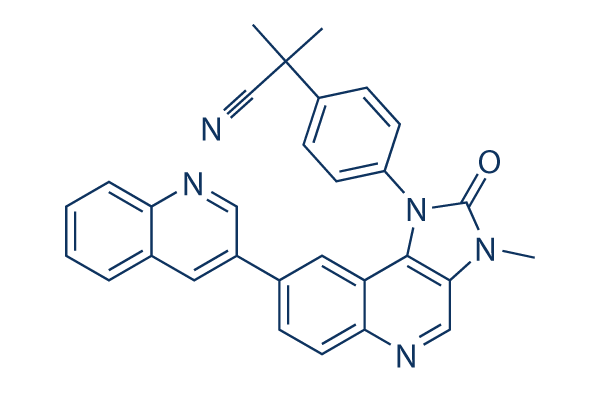Preclinical versions suggest robust action for dual IGF 1R and mTOR inhibition. A recent phase I study demonstrated that this mixed treatment may be eective in breast cancer, in which ve from 23 breast cancer patients had both partial response, prolonged stable disorder or partial metabolic response. The blend appeared especially active in luminal B like breast cancer dened as ER positive with Ki 67 immunostaining 15% as 3 out of 10 individuals in this trial, all of whom had been heavily pretreated, accomplished a partial response from the Response Evaluation Criteria in Reliable Tumors. There may be great enthusiasm for hugely specic PI3K inhibitors which might be at this time in early growth. They vary from pure pan PI3K inhibitors to isoform specic PI3K inhibitors, to dual inhibitors of each PI3K and mTOR, to Akt inhibitors.
At this time, most early phase studies making use of these agents try to pick individuals with genetic aberrations in this pathway. A recent preclinical research, nevertheless, recommended that PIK3CA mutation, but not PTEN loss, confers selleck chemical sensitivity to mTOR inhibitors. During the clinical setting, one examine retrospectively corre lated the PIK3CA mutation standing of sufferers with response rates from PI3K/Akt/mTOR inhibition. These authors observed greater responses inside the PIK3CA mutant population compared with all the PIK3CA wild style population. Focusing on the PI3K pathway seems extremely promising, even though far more in depth research is needed specifically in identifying patients who will benet. Novel agents targeting this pathway are listed in Table four.
Other possible targets Cyclin D1 is amplied in somewhere around 10% of breast cancer and it is recognized to get a function in driving proliferation through its interaction with cyclin dependent kinases such as CDK4, subsequently, it’s been suggested that cyclin directed therapies might have a function in luminal B subtypes, in which proliferation is definitely an vital aspect. Cyclin inhibitors are order Olaparib now in early phase advancement. Current preclinical investigate has identied a potential breast cancer oncogene, ZNF703, implicated inside the luminal B subtype. On this examine ZNF703 was signicantly amplied in luminal B tumors, and its in excess of expression was related with poor clinical final result. In cell lines, overexpression of ZNF703 induced cell proliferation independent of estradiol stimulation.
The investigators also observed that ZNF703 is ER regulated and could have a part in cancer stem cell self renewal, suggesting a likely purpose for ZNF703 inhibition in luminal B breast cancer. Another latest research has indicated an association  amongst luminal B tumors and overexpression on the scaold protein NHERF1. NHERF1 expression is connected with poorer survival and resistance to endocrine treatment in ER positive breast cancer. Additional research is required to determine whether or not NHERF1 is definitely an acceptable candidate for targeted treatment.
amongst luminal B tumors and overexpression on the scaold protein NHERF1. NHERF1 expression is connected with poorer survival and resistance to endocrine treatment in ER positive breast cancer. Additional research is required to determine whether or not NHERF1 is definitely an acceptable candidate for targeted treatment.
Dehydrogenase Signal
LDH exists in four distinct enzyme classes.
